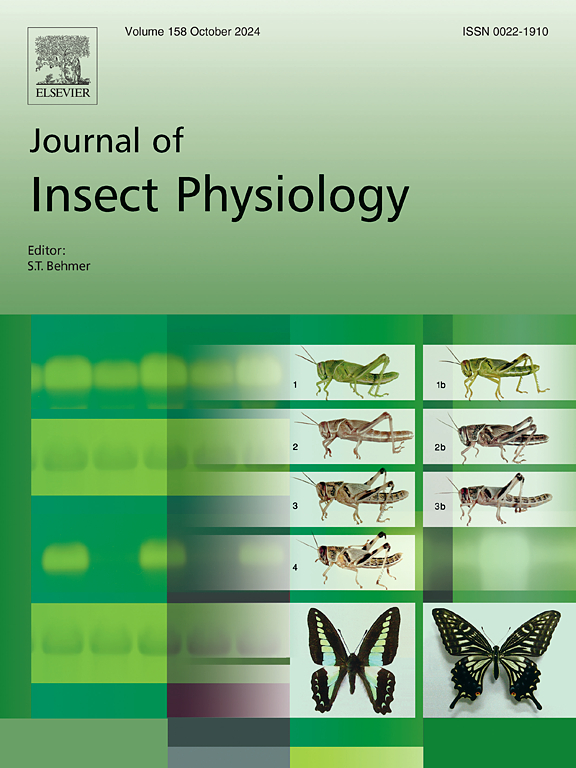Is antibiotic (mis)use an emerging ecological threat to wild insects?
IF 2.3
2区 农林科学
Q1 ENTOMOLOGY
引用次数: 0
Abstract
Antibiotic discovery revolutionized human healthcare and boosted agricultural productivity. The efficacy of this revolution is now being challenged however, as the release of antibiotic residues into soils and waterways promotes the evolution and spread of antibiotic resistance genes. There are signs that this antibiotic pollution also has ecological costs, including reduced insect health. Here, we assess this risk. We discuss where, when and how wild insects are exposed to antibiotics, the consequences of this exposure and crucially, if the concentrations that wild insects encounter are sufficiently high to trigger phenotypic responses. Data demonstrate that antibiotic residues reach concentrations in the field that can have phenotypic impacts in insects. These impacts include reduced health and foraging activity in pollinators, and improved survival in insect vectors of disease, demonstrating potential consequences for food-security and disease transmission. More generally, antibiotics can reduce insect stress resistance meaning that antibiotic pollution could elevate insect susceptibility to other stressors implicated in insect declines. We highlight gaps in our understanding of how antibiotic pollution affects wild insects and the ecosystem services they provide. These gaps urgently need to be filled, because global antibiotic use is rising. Crucially, we must determine how antibiotic residues in the field degrade or accumulate along food chains, and how field-realistic concentrations affect insects directly and via interactions with other environmental stressors. This will offer concrete insights into the consequences of rising antibiotic use for insects, and their broader societal and ecological impacts.

抗生素(误用)是对野生昆虫的新生态威胁吗?
抗生素的发现彻底改变了人类的医疗保健,提高了农业生产力。然而,这场革命的效力现在正受到挑战,因为抗生素残留物释放到土壤和水道中促进了抗生素抗性基因的进化和传播。有迹象表明,这种抗生素污染也有生态成本,包括昆虫健康下降。在这里,我们评估这种风险。我们讨论了野生昆虫在何处、何时以及如何暴露于抗生素,这种暴露的后果,以及至关重要的是,野生昆虫遇到的抗生素浓度是否足够高,从而引发表型反应。数据表明,抗生素残留在田间达到浓度,可以对昆虫产生表型影响。这些影响包括传粉媒介的生存和觅食活动减少,疾病媒介昆虫的生存得到改善,显示出对粮食安全和疾病传播的潜在影响。更一般地说,抗生素可以降低昆虫的抗逆性,这意味着抗生素污染可以提高昆虫对其他压力源的敏感性,这些压力源与昆虫数量下降有关。我们强调了我们对抗生素污染如何影响野生昆虫及其提供的生态系统服务的理解差距。这些差距迫切需要填补,因为全球抗生素使用量正在上升。至关重要的是,我们必须确定抗生素残留在田间如何降解或沿着食物链积累,以及田间实际浓度如何直接影响昆虫并通过与其他环境压力源的相互作用。这将为不断增加的对昆虫使用抗生素的后果及其更广泛的社会和生态影响提供具体的见解。
本文章由计算机程序翻译,如有差异,请以英文原文为准。
求助全文
约1分钟内获得全文
求助全文
来源期刊

Journal of insect physiology
生物-昆虫学
CiteScore
4.50
自引率
4.50%
发文量
77
审稿时长
57 days
期刊介绍:
All aspects of insect physiology are published in this journal which will also accept papers on the physiology of other arthropods, if the referees consider the work to be of general interest. The coverage includes endocrinology (in relation to moulting, reproduction and metabolism), pheromones, neurobiology (cellular, integrative and developmental), physiological pharmacology, nutrition (food selection, digestion and absorption), homeostasis, excretion, reproduction and behaviour. Papers covering functional genomics and molecular approaches to physiological problems will also be included. Communications on structure and applied entomology can be published if the subject matter has an explicit bearing on the physiology of arthropods. Review articles and novel method papers are also welcomed.
 求助内容:
求助内容: 应助结果提醒方式:
应助结果提醒方式:


